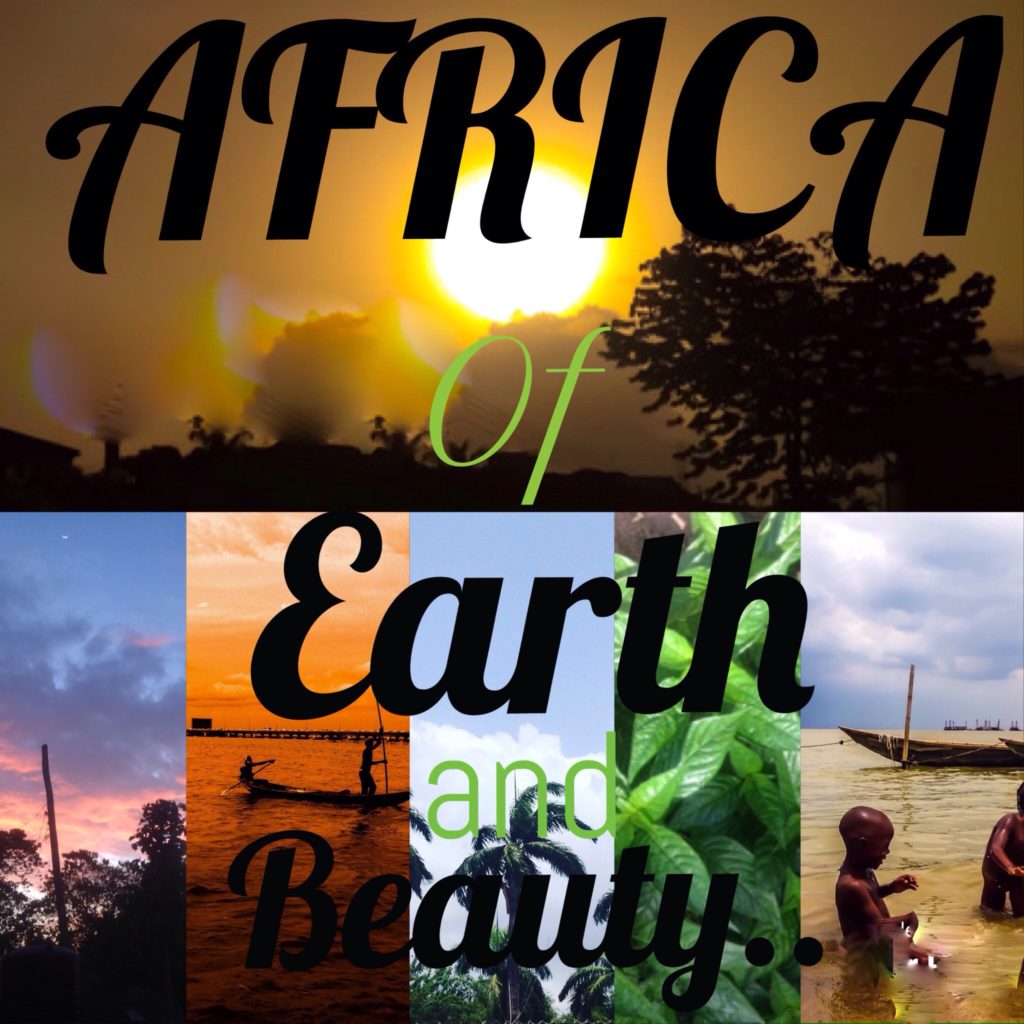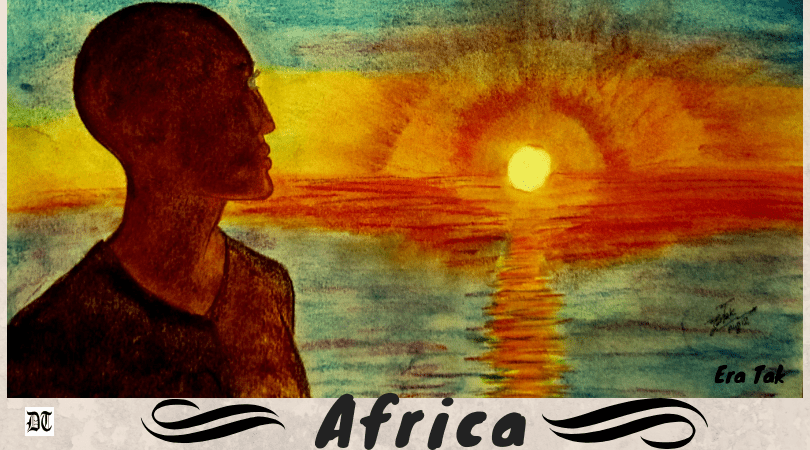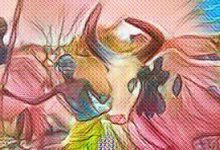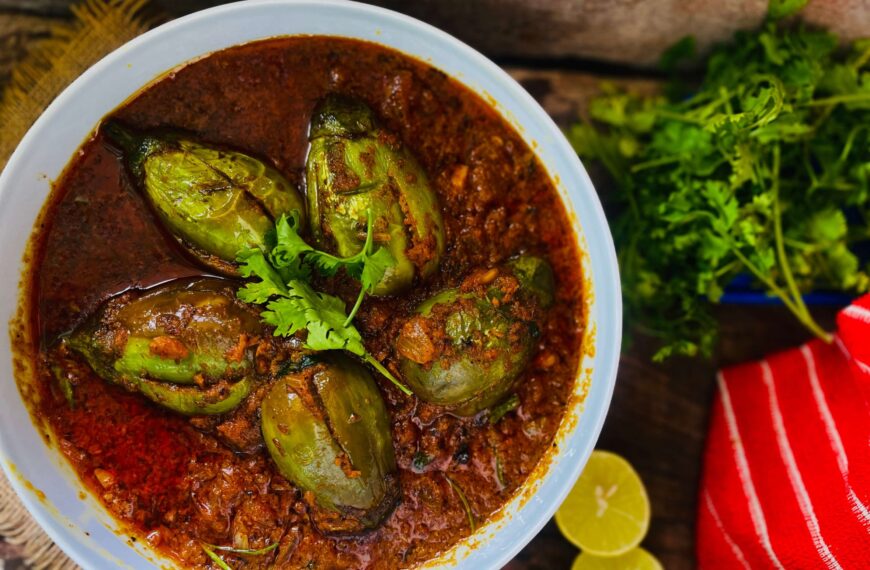Arindam, our Editor-in-Chief, talks about the ownership of the narrative of Africa, by its people, using the ‘lion’ metaphor, by Chinua Achebe. He tells us how he discovered Africa within him, during his formative years. Four insightful edits by the Africa Special Issue editors, Michele Baron, Luz María López, Olaitan Maryam Mojisola, and Swati Kumar, deepen our understanding. Nine short stories, eight brilliant research papers, one book review, 15 articles, two paintings and an artwork make Different Truths a 360-degree literary journal, other than its advocacy, opinion, and news content. Anumita Chatterjee Roy, our Managing Editor’s dedication and commitment is exemplary. Here’s a Special Feature on Africa, exclusively for Different Truths.
“Until the lions have their own storytellers, the history of the hunt will always glorify the hunter.”
~ Chinua Achebe, Nigerian author, novelist, professor and poet.
Africans have been exploited for a very long time. Chinua uses the metaphor lions for the Africans. We have quite a few voices from Africa, who tell us their story.
At present, the continent, primarily divided among the erstwhile French and English colonies are now known as Francophone and Anglophone respectively. Socio-politically and economically, Anglophone countries have an edge over their Francophone counterparts. The division among these two major groups are very sharp, so much so that it’s a hurdle for the emergence of a unified African identity – something that unified Europe with a common currency.
This issue on Africa aims to celebrate the commonness and move forward, no matter how little, towards the African identity.
Allow me to digress and tell you how I found Africa within me, over the years. I came to know about Africa in school, college and university. The journey continues.
The Dark Continent trickled into my consciousness, firing paroxysms of emotions – I was sad, heartbroken, amazed, awed, and elevated by turns. A chapter in Radiant Reader series, Uncle Tom’s Cabin, was my first introduction to the slave trade. I was to read the anti-slavery novel by American author Harriet Beecher Stowe, much later, in college. The novel tells us the grossness of slavery, emphasising love and compassion, a Christian virtue that helps remove enslavement of fellow beings.
There were chapters on Mahatma Gandhi in school textbooks. During the year-long centenary celebrations of the Father of the Nation’s birth anniversary, I was in school. Biographies, books, paintings, films (documentaries), etc. made me understand his initial struggles in South Africa. Later, I read Ved Mehta’s book, Mahatma Gandhi and His Apostles. That was another window to Africa.
During Masters, Mark Twain’s well known books, The Adventures of Huckleberry Fin, and The Adventures of Tom Sawyers, introduced several enchanting characters, including Jim. Twain, in his unique style gave us a glimpse of that time, exposing the evils of the slave trade.
We read news about the heavyweight Boxing champion Muhammad Ali alias Cassius Clay. From mid-sixties to the late seventies, Muhammad reigned supreme. He became a celebrity. The iconic quote, “Float like a butterfly, sting like a bee. Now you see me, now you don’t,” inspired our generation, half-a-world away. Several books and films made him immortal.
Newspaper reports and films on Olympics showcased some of the best Black athletes.
Maya Angelou’s poems stirred me. American TV host Oprah Winfrey, Naomi Campbell, a British model, actress and singer, went on to prove that nothing could kill the spirit of the Black, wherever they were or are.
Progressing from Bony M, the celebrated band, in my school days, my interest in Jazz began during my Bombay years, in the early to mid-1980s, with love for African drums somewhere in between. I am a fan of Isaiah Katumwa, from Uganda, a self-taught saxophonist. Mulatu Astatke, from Ethiopia, is a 73-year-old maestro, associated with Ethio-jazz. He plays four instruments, piano, organ, vibraphone and percussion. Eddie Grey is a Kenyan guitarist and composer, who performed with some of Africa’s top jazz musicians. The Rwanda-based-Ugandan musician, Remmy Lubega’s saxophone is sheer magic. Internationally acclaimed Christine Kamau is the only Kenyan female jazz multi-instrumentalists. Her music is a fusion of jazz, benga and rumba. Each of them – among many others – are landmarks in African music.
When we launched Different Truths, in November 2015, and decided to promote literature – poems, short stories, novellas, little did we know that we would meet some of the best poets, storytellers and scholars from Africa!
Olaitan Maryam Mojisola from Nigeria, is a young student, blogger, poet, writer and an essayist. I understood more about Africa during our occasional chats. I suggested that we bring out a special issue on Africa. She agreed. Oft and on, we discussed the idea for 18 months. She proposed the title of the poetry anthology, ‘Africa of Earth and Beauty.’ She is the youngest member of the editorial board.
I met Nancy Ndke, a poet, author, traveller, nature enthusiast, through our common friend, Luz Maria Lopez. As a social activist, Nancy has worked with Girl Child network in Kenya and Child protection in South Sudan and Somalia. My education on Africa continues with her. She is our Guest Editor.
Michele Baron is a scholar and academician, she develops outreach projects, writes poems, prose, and non-fiction, an active musician, painter, and artist. She has stayed in Senegal and Morocco, West Africa. She is our Consultant Editor.
The celebrated poet, editor and social activist, Luz María López, is also a narrator, translator, international cultural promoter and women’s rights advocate. She leads the World Poetic Front in Defense of Women’s Rights (WM) and Continental Director for World Festival of Poetry. Luz is our Contributing Editor.
Columnist, blogger, public speaker, and sociologist, Swati Kumar is best known for her conversational style of writing and easy use of language. As a philanthropist, she is the general secretary for ‘The Serving Hands Society’, Lagos, Nigeria. She too enriched me about Africa. Swati is our Guest Editor.
A special mention is must for the Mumbai-based renowned artist, Era Tak, who send us a bunch of her paintings. She is writing for Bollywood, now. The Africa Special Issue logo is courtesy Era, a dear friend.
Last but not the least, am grateful to Anumita Chatterjee Roy, our Managing Editor, for being a constant support, despite her very demanding job of a certified interpreter, in Ohio, the US. She put her shoulder to the wheel, and gracefully led the design team, meeting impossible deadlines with a beaming smile.
Editorials
The Love of Africa
It is a wide, wild world in which we live, although it has seemed to grow smaller, as we have watched — replacing fragile old books printed with poems and tales of the mysteries of deep, dark, unfamiliar places with radio, next, with television broadcasts and movies, and then with live connections on our laptops, tablets and smart phones. The chaos of our fast-changing world can give you a bad first impression of new places, and it’s true — there is a lot of strife, a lot of struggle, a whole lot of unhappiness in the human realm of this planet we share. There has been, for more centuries than any of us, probably, can count, or, certainly, remember.
So what is this hubris, this excitement, this treasuring of pasts which seem so dark, of presents which seem, perhaps, haphazardly fortunate for some few, and of futures, filled with brass rings of hope, if only we can reach them?
I can only speak for myself. From what I have seen of the world, we meet challenges, even great sorrows and despair, head on, and try to persevere. We find our special nooks, pillowed with comforts reminiscent of home; we seek out street corners of cities and towns bustling with energy, music, and art; we follow our noses to warm, inviting places redolent with the spices and scents of delicious local cuisine… and we dream of golden beaches, and vast, beige-rose hued dunes of timeless sands, of the Sahel with its mighty, sweet-fruited Baobab trees, and of palm-fringed oases, with secret waterfalls, cool, clear lakes, and myriad migratory birds. We all know about the wildlife—tall giraffes, solemn elephants, regal lions, hippos, rhinos, panthers, frogs, snakes, and songbirds, surf full of fish and skies full, when there are flowers anywhere to be found, of bees and butterflies.
I have lived in Senegal, and in Morocco, two nations on the western coasts of Africa. I have seen so many more places, through the eyes of friends, and scholars, and people whom I’ve encountered along the walks of life. We speak many languages, have many traditions. And here, in the wide world of the internet, many of us share heritage from the continent, from the peoples, who have travelled to all corners of the earth, bringing with them their songs, their wisdom, their arts and their hearts.
There are, of course, national lines, political issues, religious concerns, which divide — these, I am sorry to say, may also be found almost anywhere else in the world you care to look. But what touches us now, here, as we read through the pages of this Anthology, are those qualities that are special, that are unique to the people and places of Africa — the past, which we cannot change; the present, which we can do so much more to preserve and celebrate; and the future — towards which we may learn to look with hope, as our hearts are opened by the music, poems, and stories, the eyes, hands and hearts of the people who may not all originate from, but who, all, have learned the love of Africa.
Kyrgyzstan/the USA
Consultant Editor
The African American Culture
The indelible right of Africans to practice their own cultural heritage and religious beliefs was banned once they reached America as slaves. However, not even slavery could erase all the richness of the African natives’ wisdom as it is rooted in the social and collective imaginary all over the New World and maybe even more in the Caribbean. Just relate to Yemayȃ (Iya Moaye, mother of everything that is born or created), a fertility water deity of the Yoruba religion, owner of the oceans and rivers. Water is an African Goddess!
There is not a Caribbean Identity and Culture without the recognition of the influence (be it genetic or social mores) of the millions of slaves brought to the islands between 1662 and 1807, period of the Transatlantic Slave Trade. The notion of a Caribbean Culture necessarily implies (or summarises) the artistic, musical, culinary, religion, all social foundations that is representative of the Caribbean people all over the world. There is a saying in our popular wisdom philosophy that states: If you don’t have dinga you got mandinga, which means that we are all Africans somehow and inevitably. It refers more as a lesson against prejudice.
We, at Different Truths, recognise the vital legacy that our brothers and sisters from Africa have contributed in behalf of a better, unbiased, indelible loving World. Africa!
Luz María López
Puerto Rico
Contributing Editor
Africa Sends a Positive Signal of Creativity and Knowledge
Among the various factors that have helped to put the African continent on a good spot globally, literature has proved to be one of the strongest influences that have helped the social, political, religious, and even the economic aspects of Africa to a great extent. The continent has produced, and continues to birth great literary works and talents; for the consumption of its people and the world at large.
Of the three genres of literature, poetry has shown, and still does prove to be an essential, invaluable tool for the expressions and manifestations of creative ideas, imaginations, and experiences of human beings in various shades of life. Thus, this anthology shares in this same vision of exposing the grand and rich creativity of poets within and without the continent, who have one or two things to write concerning their experiences and knowledge about Africa.
It is a thing of joy that now, the continent is identified with not only archaic attributes that portrays negativity, but, the name, Africa, sends a positive signal of vast creativity and knowledge to people that come across the continent.
The anthology serves us a refined taste of creativity on various aspects of Africa.
Olaitan Maryam Mojisola
Lagos, Nigeria
Theme Editor
Nigerians Celebrate Life and Death
“The more death, the more birth. People are entering, others are exiting. The cry of a baby, the mourning of others. When others cry, the others are laughing and making merry. The world is mingled with sadness, joy, happiness, anger, wealth, poverty, etc.” ~ Michael Bassey Johnson
Africa as a whole sees the burying of their dead as an important tradition. According to the widespread belief in Nigeria, funeral ceremonies honour the life of the deceased. However, the high costs and expectations surrounding these events can place a strain on the wallet and the emotions of those involved.
From gold encrusted coffins, to billboards to custom made outfits, eye catching invites and dancing pallbearers, it seems that Nigerians celebrate death in very much the same way as they celebrate life. The expenses incurred results in funeral insurance, bank loans, monthly installments to pay for coffins and parties, etc.
Looking back we observe that diverse histories and traditions of many ethnic groups have extensive guidelines which often depend upon the cause of the death, the age of the deceased and their position in society. The most elaborate performances are for the chiefs. Whereas some tribes do not believe in sacrifice, for many the chief’s funeral ceremonies are very bloody. In Ibo tribes, for example, first, a dog is sacrificed for its ability to foresee danger, then a cat is chosen for its vision to bring the chief good eyesight then a parrot for its clear voice so that the chief will always be heard in his next life, then a goat for its sturdy feet to carry the chief wherever he wants to go.
The next set of sacrifices includes the salve wives, who are buried alive with the body after their arms and legs are broken. Depending upon the chief there may be more human sacrifices of slaves at the places where he ate, bathed, received guests and as a gift to the trees.
For people other than chiefs’ funeral depend on the person and the cause of death. The burial ceremony is always seen as a tradition that is supported by all members of the society with food and drinks served, music, dancing, and in some cases the coming out of masquerades. Some people plan how they wish to be buried and give rules and instructions for their children to obey.
This tradition is being passed from one generation to another and often people run into debt when performing burial rites. Those who decide to have a moderate ceremony are looked down upon by their peers. No wonder that the corpse of the deceased is kept in the morgue for several months or even years simply because the relations want to raise sufficient money to be able to give the departed a befitting burial. This is beside the fact that the deceased may have starved to death or the family was unable to raise money for his medical treatment.
After these burial and funeral rites, one wonders that it is now more expensive to die than to live.
Swati Kumar
Lagos, Nigeria
Guest Editor

Here’s the blueprint of the Africa Issue for the next ten days, excluding Sunday, from July 19 to 29. There will be ten Cover Stories – one each day, along with other features. We are reposting the content that was first published two years back, in September. We, however, regret that we could not salvage the amazing anthology of poems on Africa, featuring 66 poems, from as many poets, spread across 19 nations. Our technical and backend teams are working. Hope to publish it in near future. All regular columns will remain suspended during this period.
Day One: July 19
We open the Special Issue with a Cover Story by Dr. Neela Bhattacharya Saxena’s enigmatic and erudite research paper, Grace of the Black Panther: Spirit, Self and the Shaman in the Mother Continent. It’s a source of boundless energy and power that an animal totem like the panther represents. Shamans of the world intuit that secret. Like the meditative entry into the center of a mandala, if we trace ourselves back to the Mother Continent, we may discover an elemental vitality where the Spirit, the Self and the Shaman meet.
We close Day one with Atrayee Bhattacharya’s intriguing story about an NGC team, caught in the Eritrean-Ethiopian conflict and a kidnapping. What happened to Twisha? Here’s a literary thriller, Locked with Lantern and a Good Luck.
Day Two: July 20
The lead story is by Ismail Bala. He points out that every language has its own qualities, not only in the poetic or linguistic sense, but also in the way through the uniqueness of that language, the speakers of the language interpret its history and express their reality, in the research article, Notes on Translating Poems of Ado Ahmad Gidan Dabino into English.
Prof. Jared Akama Onyari, a renowned environmentalist from Kenya, in his article, Dandora Dumpsite is a Bedroom for the Urban Poor in Nairobi, states that it’s an estate littered with dirt and overflowing sewers pouring into the drainage system. For most though, it is the high level of crime, thanks to the jobless youth, who idle in the area, youth who strike fear in residents, even in broad daylight.
My Little King, A-Wooo, is a short story by Dr. Tzemin Ition Tsai. He tells us an intriguing story of the biggest bull in the village, A-Wooo, fit to lead the herd of the cattle. It’s curtains down for the second day with this story.
Day Three: July 21
Scholar and academician, Michele Baron, in her article, tea, salt and teranga, says, as in many economically challenged zones across the world, outside Dakar, in the shallow basin of Senegal’s Lac Rose, salt workers labour under the unrelenting heat of the dry-season sun, earning a pittance compared to the sums received by the package-marketers of the salt they produce. Children of salt-making families receive little schooling. The Cover Story of Day Three.
Tirthankar Das Purkayastha’s interesting research paper, The Music of Dionysus in Adaptation by Soyinka of the Bacchae and Mukta-dhara by Tagore, focusses on Soyinka’s adaptation of The Bacchae of Euripides and seeks to reread this play alongside Mukta-dhara (‘Free Current’) by Tagore. A comparative study.
In the closing article, African Women Stand Tall against Female Genital Mutilation, Debjani Mukherjee, points out that butchering girls’ private parts, cutting out healthy flesh in the name of religious ritual is barbaric. Statistics says the places where this practice still takes place are high in HIV infected cases. Thankfully, some women in Africa, who are anti-Female Genital Mutilation (FGM) activists and bringing about change, no matter how small. Every year, February 6 has been declared a zero-tolerance day for FGM.
Day Four: July 22
As a Dance/Movement Therapist, nonverbal communication is the soul of communication for Johanna Climenko. Here’s an insightful exploration of Ghana, in New York, because of her housekeeper, Rose, and her conversations with cab drivers from that country, in the Cover Story, Travelling the World in NYC: Conversations with Cab Drivers and Other Multi-Cultural Excursions.
Doris Lessing was born to British parents, in 1919. After the First World War, her father migrated to Africa. Her parents, her isolated and lonely childhood influenced not only the themes in her fiction but also shaped her as a fiction writer, opines Dr. Madhuri Chatterjee, in the article, Growing Up in Wilderness: African Stories of Doris Lessing.
We close Day four with an intriguing short story, Confetti in a Storm, by Ismail Bala. It describes a day in the life of a poet.
Day Five: July 23
Prof. Lalit Joshi, in an erudite research, Africa on Celluloid: A Historical Perspective – the Cover Story – gives us an interesting overview on African cinema, stating that by the turn of the twentieth century, Africa was making films involving local themes, but which had a global and universal appeal. Filmmakers interrogated a variety of issues ranging from environmentalism, political, social, and economic injustices to those arising from the democratisation of African societies.
Mahua Maharana, in her article, An Overview of the Libraries in Ghana, gives an overview of the libraries and the library system of Ghana. Libraries across the world are facing challenges and the activities of the public libraries haven’t been remarkable.
In the travelogue, A Day with the Maasai Tribe, Dr. Paramita Mukherjee Mullick, tells us that the Maasai people are one of the tallest tribes in Africa. Their distinctive culture, dress style and strategic territory along the game parks of Kenya and Tanzania have made them one of East Africa’s most internationally famous tourist attractions.
In the story, The Punishment, by Stanslaus Kyando, a young student had to face punishment because he had spoken against the corrupt principal. It exposes the deep-rooted corruption in schools in Tanzania.
Day Six: July 24
The Cover Story of the day, Africa: William Blake and Rabindranath Tagore, is a scholarly research paper by Dr. Madhumita Ghosh, wherein she compares and critiques two great poets, stating, it is no surprise that the two poets would each write a poem on, and titled Africa, voicing their protests, against the exploitation of Africa and its inhabitants by powers superior. While Blake’s poem was composed during one of the most turbulent times in European history, the French Revolution, Rabindranath Tagore wrote his poem Africa, during the Second World War.
We close the day with two short stories.
In the first story Rina Bindal, based on real life experiences, writes PK, a Hope for Rawanda Fights against Fate and Fortune. The protagonist, PK, says that the world had let Africa down by not giving African people a chance to succeed. His opinion though was this shouldn’t stop African people from excelling and stop using this as an excuse to be lazy and dependent on foreign aid.
Anansi is a part of the African folklore. He a popular character in many regions of Africa and is known by many names. He is a trickster character, someone who tries to trick others, but often finds himself trapped in his own web, recounts Kiren Babal, in Anansi and the Wisdom Pot.
Day Seven: July 26
We open with the Cover Story, South Sudan: A Country in Perpetual Turmoil, by Sreelata Menon. She says, Salva Kiir Mayardit took oath as the first president of the Republic that day in 2011, the new nation not only gratefully savoured its first moments of independence from North Sudan but also remembered with sadness the more than two million people who had sacrificed their lives for that very moment. Tears rolled down the cheeks of many that day. Perched on the White Nile that meanders in from Lake Victoria, Juba is a village in transition.
Dr. Brajesh Kumar Gupta’s in-depth research paper, Empowerment and Wellbeing of African Women, states, African women have been instrumental in shaping African society and are a vital force for growth and development, and promising reports about women’s increased leadership and political engagement in such countries as Liberia, Malawi, Rwanda, and Senegal, suggest we could expect the same across Africa.
There is a tribe in central Africa, some say it is the Himba Tribe, while some say it is the Ubuntu Tribe, which have a unique tradition. When a woman wants to become a mother, she recluses herself from the tribe and goes to stay in the forest. She stays amongst nature and a song comes to her, the song of her child. Once the child is born, the song is sung to him or her, till the child learns the song. Anumita Chatterjee Roy unveils one of the mysteries, in Every Soul has its Song of Life!
We close the day, with Tutu Dutta recounting a popular folktale from the Calabar region of Nigeria. It’s about a stunning young woman, Afiong. But she was vain and turned down several marriage proposals brought by her parents. It all changed when she heard about the most handsome man from a faraway land. What happened after her marriage? The story, The Girl Who Married a Stranger, has the answer.
Day Eight: July 27
In the research article, Black Women Celebrate Africanness: Identity, Rights, Culture and Gender Assertion, Dr. Nachiketa Bandyopadhyay traces the trials and tribulations, the formation and assertion of the Black women’s identity. The Cover Story of the day.
Preeyan Abraham, a HR Consultant, tells us about the challenges of relocating to work abroad, particularly in Africa. He cautions that if you are moving to a country in Africa, you expect what you see on TV, but for any country it is not the case, in the article, The Challenges of Working in Africa.
We close the day with Alessandra Arora’s short story, The End of all Arguments. The spider Ananse, the trickster, the master of all the stories of the world after he bought the stories from Nyame the sky god but that is a tale for another time.
Day Nine: July 28
Environment activist, Radhika Bhagat, in the Cover Story, Osun: The River Goddess of Africa, says, the Osun-Osogbo Sacred Grove is situated along the Osun River in the city of Osogbo and is a UNESCO world heritage site. Here, a statue of the goddess Osun stands by the river with her arms outstretched as if to welcome visitors to her forest.
In the article, Togo: The Largest Voodoo Market in the World, Swati Kumar tells us that Togo’s capital city of Lomé is the birthplace of the largest Voodoo market in the world – a kind of super supply store for fetishes, charms, and anything else one might need for a ritual.
In the article, Sojourner Truth, First Feminist to Assert Black Identity: Intersectionality and Truth, Dr. Ranjana Sharan Sinha states that her most famous speech, “Ain’t I a woman?” was entirely improvised. Truth’s short, simple speech was a powerful rebuke to many antifeminist arguments of the day. It became and continues to serve as a classic expression of women’s rights. Truth became, and still is today, a symbol of strong woman.
Day Ten: July 29
Sreelata Menon, explores the Nile, one of the longest rivers in the world passes that through nine countries in Africa before it reaches Egypt and the Mediterranean Sea. The origins of this legendary river are quite obscure and steeped in mystery. Conjectures apart, nobody knows for sure where it springs from, even today. Several attempts since ancient times have been made to trace its path to its origin. She talks about its history and politics, in the Cover Story, The History of the Iteru – The Nile.
Nayna Kamath, in the travelogue, The Magical Mystery of Enigmatic and Enchanting East Africa, takes us on a tour of two East African countries, Tanzania and Rawanda, unfolding the magical mysteries of these places.
We close the Special Issue on Africa with the review of a book, The Inspiring Story of the African American, George Washington Carver, Gauri Dixit, tells us about Veena Gavankar. She was fascinated with Carver’s life and wanted to share his inspiring story with her children. She went on to do a lot of research on him and his work and wrote this book in Marathi.
Please like, comment, and share. The world is with you, Africa!
Photos from the Internet
#Africa #SpecialFeature #Anthology #ShortStories #Fiction #Articles #Poems #Writeups #AfricanTravel #AfricanMusic #AfricanArt #DifferentTruths





 By
By
 By
By
 By
By
Feeling so excited. Such an excellent initiative. I have already feeling like listening to the sights and sounds of Africa.
By best regards to the Editorial Team.